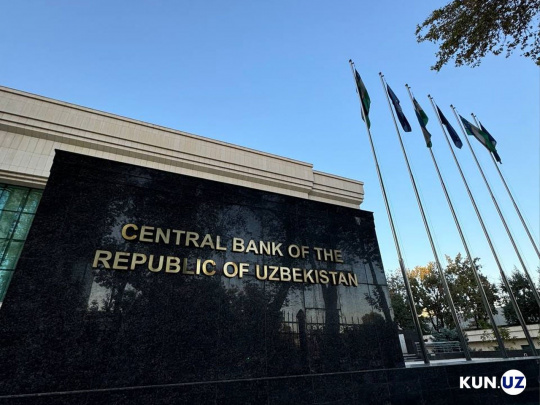Uzbekistan’s remittance inflows projected to hit $20 billion by 2027
The Central Bank of Uzbekistan forecasts that remittance inflows to the country could reach up to $20 billion by 2027, based on their primary economic scenario. This projection is part of the Central Bank’s preliminary draft policy outline for monetary policy from 2025 to 2027, detailing expectations of annual growth in remittances and associated economic risks.

Photo: AP
The report highlights that remittances in 2023 are expected to increase by 25-30%, amounting to approximately $14.5-$15 billion. For the years 2025 through 2027, the Central Bank anticipates remittance growth to stabilize, expanding by 10-15% annually as part of a long-term upward trend. However, the weakening of the Russian ruble is noted as a significant potential risk that may impact remittance volumes, especially given Uzbekistan’s reliance on money transfers from its substantial migrant population in Russia.
According to the Central Bank’s scenario, shifts in migration flows and the growing trend of Uzbeks migrating to higher-income countries are expected to support an increase in remittance volumes. As more Uzbeks find employment in higher-income nations, inflows from these countries are projected to grow, diversifying the sources of remittances and potentially reducing dependence on any single currency, such as the Russian ruble.
In the first nine months of this year, Uzbekistan received $11.3 billion in remittances, reflecting a 34.8% increase compared to the same period last year. The Central Bank expects this growth to continue, though it notes that the impact of the depreciating ruble on remittance flows may gradually diminish over the coming years as more Uzbeks move to countries with stronger currencies.
Recommended
List of streets and intersections being repaired in Tashkent published
SOCIETY | 19:12 / 16.05.2024
Uzbekistan's flag flies high on Oceania's tallest volcano
SOCIETY | 17:54 / 15.05.2024
New tariffs to be introduced in Tashkent public transport
SOCIETY | 14:55 / 05.05.2023
Onix and Tracker cars withdrawn from sale
BUSINESS | 10:20 / 05.05.2023
Latest news
-
Uzbekistan tops medal table at Asian Cadet Judo Cup in Kazakhstan
SPORT | 18:42 / 05.07.2025
-
Uncertainty grows as new homes remain without gas supply
SOCIETY | 17:46 / 05.07.2025
-
Uzbekistan plans to launch national ferry service in Caspian Sea
SOCIETY | 16:03 / 05.07.2025
-
Dozens of violations, zero accountability: Fergana police cancel fines for chief’s wife’s car
SOCIETY | 16:02 / 05.07.2025
Related News

16:15 / 04.07.2025
World Gold Council: Uzbekistan tops global gold sales in early 2025

17:35 / 01.07.2025
Central Bank bans automatic loan deductions from social benefits without citizens’ consent

18:35 / 25.06.2025
“Karimov thought he could control the market by force” — Former Defense Minister speaks out

13:42 / 16.06.2025



